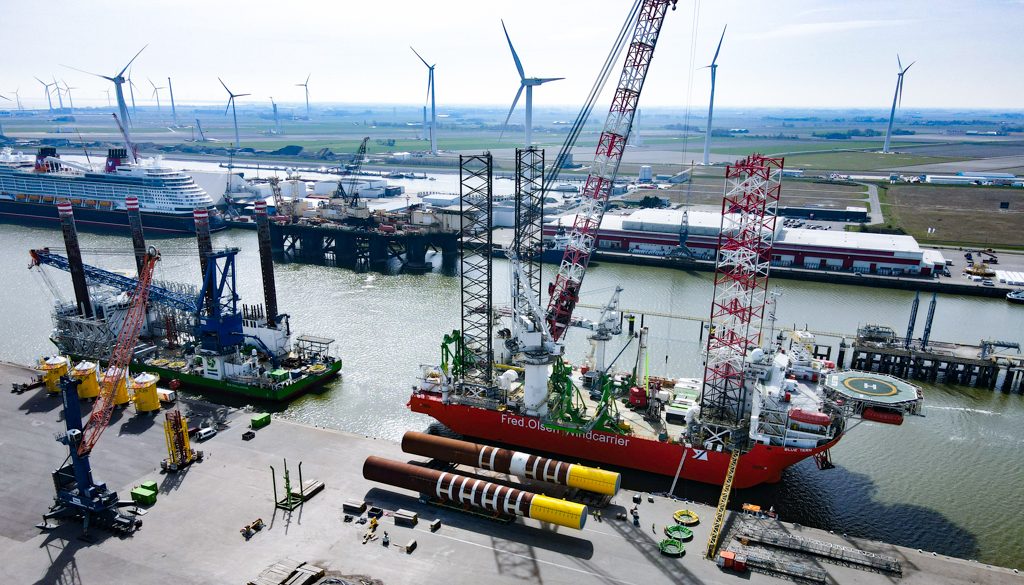Hamburg, June 13th 2022. Construction work for RWE’s Kaskasi offshore wind farm north of Helgoland progressed rapidly in the spring. Using the Buss Terminal Eemshaven as a base port, more than 50 percent of the foundations have already been successfully installed.
“We are pleased that our partner Buss was able to provide the necessary space and services for this project at such short notice. The progress of the project is a sign of the good cooperation between all parties involved,” explains Frits Laugeman, Project Director Kaskasi at RWE Renewables.
After the successful tender in December 2021, Buss is responsible for handling, storage and terminal logistics of the 38 monopiles and transition pieces on its own terminal site. RWE’s wind farm is currently being built around 35 km north of Helgoland. After its completion, it will supply the equivalent of around 400,000 households per year with green electricity.
In the past months, Buss has received a total of 38 foundation sets for the wind turbines of type SG 8.0-167 DD as well as the foundation of the offshore sub-station and stored them at the terminal. The foundation sets each consist of a monopile (MP), which is installed in the seabed, and a transition piece (TP), which connects the monopile to the wind turbine tower. In autumn, the remaining foundations will be installed via the Buss Terminal.
“After a long dry spell of offshore wind farm-installations on German territory, we are pleased to be a part of one of the first offshore wind farms to be realised, again,” says Martin Schulz, Managing Director of Buss Energy “Without the positive and cooperative collaboration with our logistics partners and the client RWE, the rapid implementation would not have been possible,” Schulz continues.
As base port, Buss is not only providing the required large-scale equipment, staff and storage areas for this project, but is also responsible for the project and interface management for the base port logistics. A total of around 75,000 m² of the 210,000 m² heavy lift terminal will be used for the Kaskasi project.
The load-out of the monopiles and transition pieces from transport barges was carried out from December to February using a LR11350 crawler crane. At the terminal itself, Buss uses SPMT axles and specially designed transport saddles to move the components.
Furthermore, Buss already unloaded three steel collars, each weighing approx. 170 tonnes, last year with the help of two mobile harbour cranes of the type LHM550 and LHM600. These steel collars were placed around three foundations at the Kaskasi wind farm. The so-called “collared monopile” was designed on the basis of a patent developed by RWE. The new technology is intended not only to provide additional support for lateral loads, but also to increase the overall load-bearing capacity of monopile foundations. RWE will conduct accompanying tests to prove that the steel collar improves the behaviour of the foundation structure compared to standard monopiles.
The load out of the components is carried out using the installation vessels Blue Tern, Neptune and Seaway Strashnov for the monopile installation and the Sea Challenger for the installation of the transition pieces and steel collars.



























